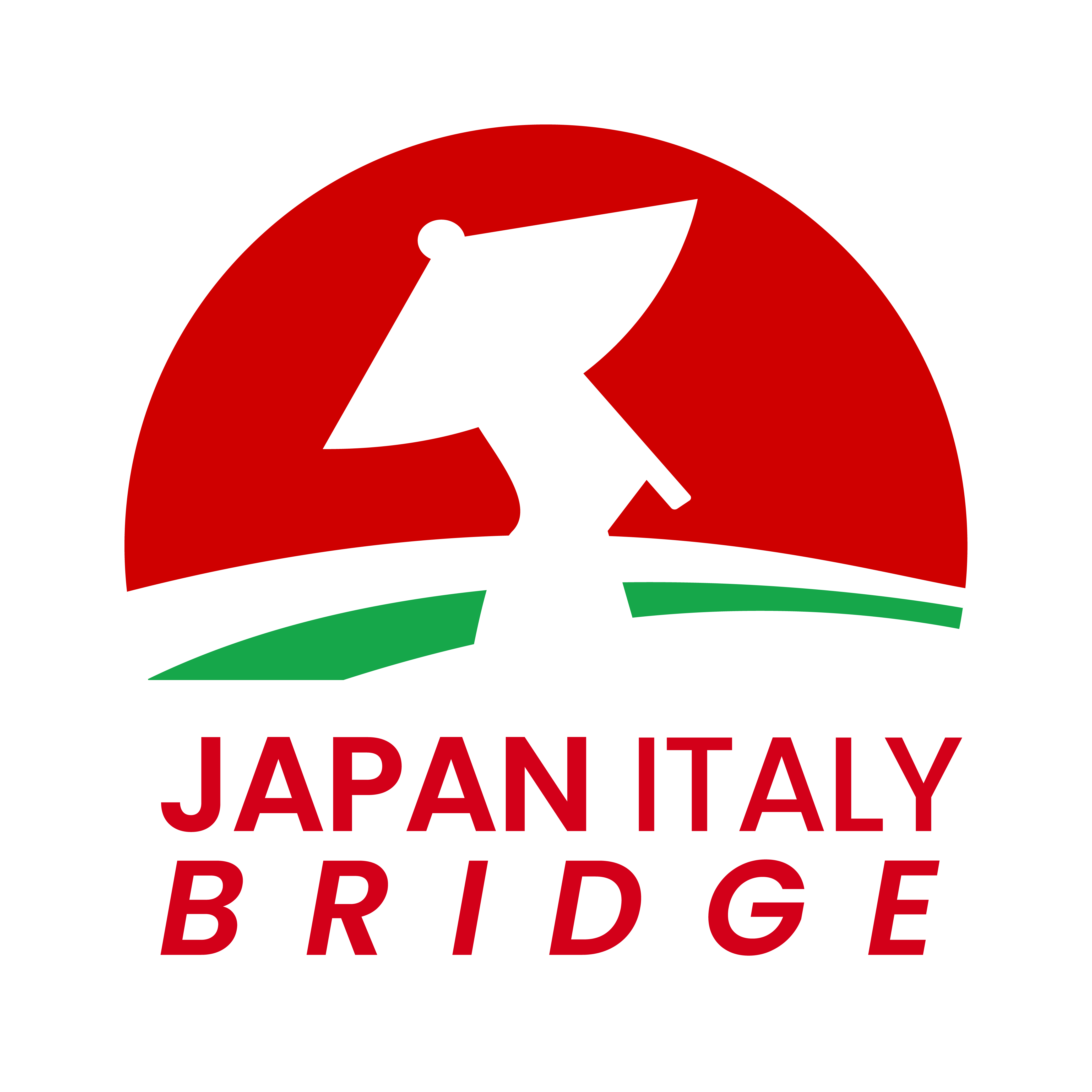Case Study: How Japan Uses Culture and Environment to Conquer the World
Japan is not just advanced technology, sushi and samurai: it is also a leader in environmental and cultural diplomacy. Through targeted strategies, the Land of the Rising Sun has been able to intertwine tradition and innovation to strengthen its global influence. But how did Japan use culture and sustainability as tools of soft power? Let's find out together.

Environmental Diplomacy: A Concrete Commitment
Japan has always had a deep relationship with nature, a bond that is reflected in its philosophy of life and its environmental policies. After the Fukushima disaster in 2011, the country accelerated the transition to renewable energy, investing in innovative solutions such as solar energy, hydrogen and sustainable resource management.
One of the most interesting examples is the "Cool Biz", a government initiative launched in 2005 to reduce energy consumption in offices: less air conditioning and a more informal dress code to promote energy saving. This project has had a great impact, significantly reducing CO2 emissions and becoming a model for other nations.
Internationally, Japan leads numerous environmental conservation projects, including supporting Southeast Asian countries in the fight against marine pollution and the sustainable use of ocean resources. Furthermore, with the "Tokyo Protocol", Japan has taken a central role in global climate policies, promoting concrete solutions to address climate change.

Culture as a Tool for Soft Power
In addition to sustainability, Japan has been able to export its culture in a strategic way. The global rise of anime, manga, Japanese cuisine and traditional arts such as Noh theater and the tea ceremony is no coincidence. These elements have become vehicles of cultural diplomacy, captivating the world and strengthening the "brand" of Japan abroad.
A case in point is the success of Cool Japan, a government initiative that supports the spread of Japanese culture through cinema, music, fashion and technology. This program has made Japan a point of reference for the global creative industry, attracting millions of tourists and investors.
The 2020 Tokyo Olympics were also an exceptional showcase for Japanese cultural diplomacy. Despite the challenges of the pandemic, Japan was able to show the world its capacity for innovation, sustainability and hospitality.

A Model to Follow?
The Japanese approach to environmental and cultural diplomacy demonstrates that soft power can be an effective weapon to influence global politics without the use of force. A model that many countries are starting to observe with interest.
In an era in which environmental and cultural challenges are more relevant than ever, Japan continues to chart a path that combines tradition, innovation and a concrete commitment to the future of the planet. An example to study, but above all to imitate.
IKEA and Starbucks: The Secret to Their Success in Japan
When two global giants like IKEA and Starbucks decide to conquer the sophisticated Japanese market, the key to their success lies in one word: localization. But how did these giants enter the hearts and homes of Japanese consumers? Let's find out together.

IKEA: A Strategic Return
IKEA first entered Japan in 1974, but the adventure ended in 1986 due to a lack of understanding of local preferences. However, the Swedish giant did not give up. In 2006, after careful analysis, it returned with a renewed strategy. It adapted the dimensions of its furniture to align with the smaller living spaces typical of Japanese homes and introduced specific products, such as tatami and traditional tableware, respecting local customs. It also changed the shopping experience, offering delivery and assembly services, aware that many Japanese customers do not own vehicles suitable for transporting bulky furniture. This attention to detail has made IKEA a reference point for furniture in Japan.

Starbucks: The Art of Cultural Integration
Starbucks opened its first store in Tokyo in 1996, bringing with it not just coffee, but an entire experience. To win over Japanese consumers, the company introduced unique drinks inspired by local flavors, such as matcha latte, and created environments that reflected Japanese aesthetics, using traditional materials and minimalist design. It also respected the importance of seasonality in Japanese culture, launching limited-edition products during local holidays. This fusion of tradition and innovation has made Starbucks a beloved and frequented place throughout the country.
Lessons in Localization
Both companies have shown that to succeed in a foreign market, it is not enough to replicate a successful model elsewhere. It is essential to immerse yourself in the local culture, understand its nuances and adapt the offering to the specific needs of consumers. This approach not only facilitates brand acceptance, but also creates an emotional connection with the public, which is essential for loyalty.
IKEA and Starbucks are prime examples of how a well-thought-out localization strategy can turn challenges into opportunities. Their ability to respect and integrate Japanese cultural elements into their offerings has allowed them to thrive in a demanding and competitive market. For any company aiming to expand globally, the lesson is clear: listening, observing and adapting are the keys to success.
Effective communication is essential for every company or project. Japan Italy Bridge was born with the aim of connecting and promoting Italian companies in Japan and Japanese companies in Italy, offering tailor-made solutions to amplify your visibility and strengthen your brand. Thanks to our team of experts and a network of qualified collaborators, we develop customized communication and marketing strategies, providing all the tools necessary to tell your story in the most effective and engaging way.
Our services:
Art Direction – We create a strong and coherent visual identity.
Content Creation – We produce quality content to best tell your brand story.
Digital & Influencer Marketing – Targeted digital strategies and collaborations with influencers.
Social Media Management – Management and optimization of social channels.
Event Creation & Management – Organization of exclusive events for your business.
Branding – Construction and strengthening of the company image.
Web Design – Development of modern and functional websites.
Find out more about our projects and how we can help you grow: Japan Italy Bridge
The Most Effective Marketing Strategies in Japan
Japan is a unique market, where tradition and innovation intertwine to create original and effective marketing strategies. Understanding Japanese consumer behavior is essential for those who want to succeed in this fascinating country. Here are five winning strategies to conquer the Japanese public.

1. Experiential marketing: engagement first
Japanese consumers love to live immersive experiences before purchasing a product. Interactive events, pop-up stores and practical demonstrations are highly appreciated tools. Brands such as Shiseido and Sony often organize immersive experiences to allow customers to test products first-hand, thus strengthening the connection with the brand.
2. Collaborations with local influencers and idols
Japanese influencers, known as "Key Opinion Leaders" (KOL), play a key role in purchasing decisions. YouTubers, streamers and pop idols have a huge following and enjoy great credibility. Collaborating with them through reviews, sponsorships and targeted campaigns can guarantee a significant impact on the public.
3. Packaging and eye-catching design
Aesthetics are of immense value in Japan. A well-designed packaging can make the difference between a successful product and one that goes unnoticed. Many brands invest in elaborate packaging inspired by local culture or the philosophy of "kawaii" to attract consumers' attention.

4. Omnichannel strategies for a seamless experience
Integration between physical stores and digital platforms is essential. Successful brands in Japan offer a seamless experience between e-commerce, social media and traditional stores. Big names like Uniqlo allow customers to buy online and pick up in store, creating a convenient and efficient purchasing ecosystem.
5. Subtle but effective advertising approach
Unlike other markets, aggressive advertising in Japan is often counterproductive. Companies prefer refined messages, emotional storytelling and content that enhances the quality of the product rather than direct sales techniques. Poetic TV commercials and minimalist digital campaigns are among the most appreciated by the public.
Adapting to the peculiarities of the Japanese market means adopting targeted strategies, respectful of local preferences and capable of creating an authentic connection with consumers. Understanding these elements can make the difference between a successful entry and a misstep in a market as demanding as it is fascinating.
Effective communication is essential for every company or project. Japan Italy Bridge was born with the aim of connecting and promoting Italian companies in Japan and Japanese companies in Italy, offering tailor-made solutions to amplify your visibility and strengthen your brand. Thanks to our team of experts and a network of qualified collaborators, we develop customized communication and marketing strategies, providing all the tools necessary to tell your story in the most effective and engaging way.
Our services:
Art Direction – We create a strong and coherent visual identity.
Content Creation – We produce quality content to best tell your brand story.
Digital & Influencer Marketing – Targeted digital strategies and collaborations with influencers.
Social Media Management – Management and optimization of social channels.
Event Creation & Management – Organization of exclusive events for your business.
Branding – Construction and strengthening of the company image.
Web Design – Development of modern and functional websites.
Find out more about our projects and how we can help you grow: Japan Italy Bridge
Case Study: Uniqlo, the Global Strategy Model of a Japanese Fast Fashion Giant
Uniqlo is not simply a fast fashion brand, but a true case study of successful global strategy. Founded in 1984 in Japan, the company has been able to stand out in a saturated market thanks to an innovative business model and a clear philosophy: offering quality clothing at affordable prices, without chasing ephemeral trends.

The Essence of Uniqlo Strategy
Unlike competitors such as Zara and H&M, Uniqlo does not focus on fast fashion and seasonal collections. The heart of its strategy is the concept of "LifeWear": essential, functional and durable garments, designed to adapt to every lifestyle. An approach that reduces the need for continuous collection renewals and creates a bond of trust with consumers.
Vertical Integration: The Secret to Success
Uniqlo directly controls the entire production process, from design to distribution. This vertical integration allows it to maintain competitive prices without compromising quality. It also works with advanced textile companies to develop innovative materials, such as HeatTech technology for thermal clothing and AIRism for lightweight, breathable garments.
International Expansion and Local Adaptation
Internationalization has been a key pillar of Uniqlo's growth. Today, the brand has thousands of stores around the world, with a strong presence in Asia, Europe and North America. Its global success is the result of a perfect balance between brand consistency and adaptation to local preferences. For example, in China Uniqlo has been able to integrate the omnichannel model with a strong digital presence, while in the United States it has focused on iconic flagship stores to strengthen brand awareness.

Minimalist but Effective Marketing
Unlike many fast fashion brands, Uniqlo does not invest heavily in traditional advertising or influencer marketing. Instead, it prefers strategic collaborations with designers and artists, such as the UT line with pop culture-inspired graphics, or partnerships with names such as Jil Sander and Marimekko. A sober marketing, but with a strong and targeted impact.
Sustainability and Social Responsibility
In recent years, Uniqlo has intensified its commitment to sustainability. It has launched initiatives such as recycling used garments and producing eco-friendly materials. It has also improved the transparency of its supply chains, aiming to ensure ethical working conditions in its factories.
Case Study: MINISO's Success and Focus on the Japanese Market

A Vacation That Inspired a Global Idea
In 2013, while on vacation in Japan with his family, Jack Ye discovered a business model that would transform global retail. Inspired by Japanese stores that specialize in quality, beautifully designed, and affordable products, Jack Ye combined this vision with his extensive experience to create MINISO, based in Guangzhou, China, a brand designed to meet the needs of young consumers around the world. With its minimalist aesthetic and promise of quality at affordable prices, MINISO has quickly gained international popularity, becoming a benchmark in experiential retail. But what makes MINISO so special, especially in a competitive market like Japan?
MINISO and Marketing in the Japanese Market
MINISO has benefited greatly from positioning itself as a brand with Japanese influences, exploiting the association with minimalist design and the typical quality of Japanese products, its strengths can be summarized as follows:
1. Focus on Japanese Design
MINISO has invested heavily in the design of its products, collaborating with Japanese designers and developing a simple yet attractive aesthetic. The Japanese influence is evident not only in the products but also in the layout of the stores, which recall the order and cleanliness typical of Japanese commercial spaces.
2. Affordable Pricing and Penetration Strategy
The Japanese market is known for its focus on perceived value. MINISO has been able to meet this need by offering products of comparable quality to those of its rivals, but at a lower price. This strategy has allowed the brand to conquer a wide consumer base, including students, young professionals and families.
The use of seasonal promotions, inspired by Japanese holidays such as Christmas or Golden Week, has further strengthened market penetration.
3. Collaborations with Iconic Brands
Another key element of MINISO’s marketing strategy in Japan has been the use of collaborations with popular brands and franchises such as We Bare Bears, Disney, and Sanrio. These deals have allowed MINISO to position itself as a “cool” and youthful brand that can appeal to a niche but highly loyal audience, such as pop culture and anime fans.
4. In-Store Experience: The Wow Factor
The layout of MINISO stores in Japan is designed to provide a smooth and enjoyable shopping experience. The soft lighting, neat product layout, and abundance of small but useful items stimulate impulse buying, a crucial element in the Japanese market.
This attention to detail makes the store itself an attraction, inviting consumers to spend more time inside and, as a result, increase the likelihood of purchasing.

MINISO Marketing Impact in Japan
MINISO’s success in Japan is reflected in its sales figures and continued expansion. The combination of competitive pricing, strategic partnerships, and a unique shopping experience has established MINISO as a preferred choice among lifestyle retailers.
The brand has also benefited from the use of social media to promote its offerings. Curated photos and videos, showcasing innovative products and special collaborations, are shared on platforms such as Instagram and Twitter, reaching millions of Japanese consumers and strengthening the brand’s value.
A Global Success Model with Japanese Roots
MINISO’s business model, inspired by Japanese retail, has proven to be highly scalable and replicable globally. The brand has not only captured the hearts of Japanese consumers, but has also used Japan as a platform to strengthen its international appeal.
With its ability to combine aesthetics, functionality, and accessibility, MINISO stands out as a successful case study for anyone who wants to understand how a brand can use cultural influences to conquer diverse markets.
Case Study: Don Quijote
Don Quijote, affectionately known as Donki to Japanese consumers, is more than just a retail store. Founded in 1980 by Takao Yasuda, Don Quijote has become a cultural phenomenon in Japan: its more than 600 stores, often open 24 hours a day, featuring a deliberately messy design and shelves packed to the brim, creating a continuous discovery experience for customers. The brand is also known for its mascot, Donpen, a friendly blue penguin who adds a touch of humour to the brand and helps strengthen its visual identity.

Why Don Quijote is so loved?
1. Stunning Variety of Products
Don Quijote offers a seemingly endless assortment: you can find everyday items such as food and cleaning products, but also curious and unusual objects, such as Halloween costumes, prank gadgets and unique accessories. This mix of necessity and extravagance makes Don Quijote a place for everyone.
2. Competitive Prices
The brand is known for its affordable prices. Don Quijote uses a strong supplier network and efficient inventory management to keep costs low, making its stores a popular destination for both those looking for convenience and those looking to buy in bulk.
3. Fun Shopping Experience
Don Quijote stores are designed to surprise. Narrow aisles and displays overloaded with products create a chaotic but exciting atmosphere, almost like a "treasure hunt". This approach not only encourages customers to explore every corner of the store but also increases the likelihood of impulse purchases.
4. Flexibility and Adaptability
Each Don Quijote store tailors its offerings to the local community. For example, in the tourist districts, you will find Japanese souvenirs, snacks, and cosmetics that are popular with international visitors. In the residential districts, however, the emphasis is on basic necessities.

Don Quixote's Secret to Success
1. Unique Marketing Strategy
Don Quijote does not invest heavily in traditional advertising. Instead, it relies on word of mouth and in-store experiences to build its brand. The store's upbeat and catchy music, the famous Donki Song, creates a unique sonic identity that sticks in customers' minds.
2.Amazing Collaboration
Donki has embarked on a surprising collaboration with Bruno Mars to create a new musical identity. Mars’ choice came after the chain’s historic jingle needed to be updated due to copyright issues. The singer not only composed a new official song for Donki, but also starred in a series of commercials alongside the chain’s famous penguin mascot, Donpen. The campaign attracted a lot of attention, showing Bruno Mars dancing with Donpen to the rhythm of a lively beat, creating a party atmosphere. The initiative also includes a collection of exclusive Mars merchandise, a true tribute to Donki’s unique mix of pop culture and retail. This collaboration is a brilliant move, capable of renewing the brand while maintaining its iconic appeal
https://youtu.be/bCBqxHc5idI?si=fN1mpPkIuD5jkv02
3. Continuous innovation
The company is not afraid to experiment. From collaborations with international brands to the creation of high-end stores like MEGA Don Quijote, Don Quijote continues to evolve to meet the needs of an increasingly diverse clientele.
4. Strategic Presence in Tourist Locations
Don Quijote is particularly popular among tourists, thanks to its tax-free availability and wide range of souvenirs and cosmetics. Stores such as the famous Donki in Shibuya attract millions of visitors each year, cementing the brand as a must-visit for those visiting Japan.
5. Visionary Leadership
Under Takao Yasuda, Don Quijote has adopted a flexible and decentralized approach, giving each store manager autonomy to respond to local needs. This has allowed the company to grow rapidly without losing touch with customers.

The Cultural Impact of Don Quijote
Don Quijote is more than just a store; it is a cultural institution in Japan. Its unique aesthetic and playful approach to shopping has inspired imitators and reinforced the allure of “organized chaos.” The brand has also found an international audience, expanding to countries like Singapore, Thailand, and even the United States. In Japan, Donki has become synonymous with convenient and fun shopping, a place where anyone can find something useful or unique, often unexpectedly.
Conclusion: Don Quijote, a Lesson in Retail Success
Don Quijote’s success lies in its ability to combine competitive prices, an infinite variety of products and a unique shopping experience. In an increasingly competitive retail market, Don Quijote stands out for its innovative and customer-oriented approach. Whether locals looking for convenience or tourists looking for souvenirs, Don Quijote has positioned itself as a brand that caters to everyone, turning every visit into a memorable experience.
Case Study: Christmas as a Commercial Phenomenon: An Analysis of Japanese Success

The adoption of Christmas in Japan offers an interesting case study of how a culture can reinterpret a foreign holiday, turning it into an economic driver. The phenomenon is based on three main pillars:
1. Cultural adaptation and local storytelling
The success of Christmas in Japan is rooted in the ability to integrate Western symbols and traditions with local values and sensibilities. KFC fried chicken and Christmas cake are prime examples: both reinterpret the traditional Western Christmas meal, but in a form accessible and attractive to the Japanese public. These symbols embody nostalgia for the idea of post-war American prosperity, but at the same time satisfy the Japanese taste for attention to detail, aesthetics and conviviality.
2. Creating seasonal needs
Christmas in Japan is more than just a holiday; it’s a carefully orchestrated season of consumption. Peer pressure and the desire to participate in a shared atmosphere create a sense of urgency that drives sales. From KFC bucket reservations to personalized cakes, to couple gifts and romantic dates, everything is designed to create targeted demand.
3. The strategic use of experiences
A distinctive element of Christmas marketing in Japan is the creation of immersive experiences. Markets, spectacular lights and themed decorations are designed to engage the public and create memories. The experiential aspect amplifies the value of Christmas as a social event, attracting consumers of all ages and turning them into brand ambassadors through social media

The Economic Impact of Christmas in Japan
Although not an official holiday, Christmas is an event that generates a considerable economic impact. Some of the sectors that benefit the most include:
Restaurants: Chains like KFC are seeing impressive sales spikes, with Christmas being one of the most profitable weeks of the year.
Pastries and confectionery: Cake and dessert sales are hitting record highs, fueled by an industry that prides itself on quality and innovation.
Fashion and accessories: Christmas sales and date-related promotions are boosting sales of clothing, jewellery, and beauty products.
Domestic tourism: Christmas attractions, such as markets and lights, are driving many families and couples to travel within Japan, boosting local economies.

Criticisms and Future Prospects
Despite its commercial success, Christmas in Japan is not without its critics. Some observers believe that the excessive focus on consumerism may diminish the authenticity of the holiday. Furthermore, the emphasis on gifts and romantic dates may fuel social dynamics that exclude those who do not participate in the dominant Christmas narrative. However, the Japanese Christmas phenomenon continues to evolve, demonstrating an incredible ability to adapt. With the rise of e-commerce and a greater focus on sustainability, the future of Christmas in Japan could see an integration of tradition, technology and more conscious practices
Conclusion: A global case study
Christmas in Japan is a prime example of how holidays can be used as cultural and commercial marketing tools. Japan’s ability to transform a religious celebration into a secular, lighthearted, and wildly profitable event offers valuable lessons in creativity, adaptability, and branding strategies. For anyone working in marketing or studying the dynamics of cultural consumerism, the Japanese Christmas is a model worth exploring.
Business Focus: How to approach the Japanese market
Here we are again with the column dedicated to the Business Focus and today we are talking about how to approach the Japanese market. Starting from start-ups up to large companies, very often we tend to forget to approach and target the Japanese public and this is a mistake from the beginning. Why eliminate a slice of the market that represents the third world power in terms of consumers?
How to approach the Japanese market
Autore: Erika
As we mentioned earlier, the Japanese market represents the third largest slice of the world by consumer level. Instead, did you know that social media platforms, even the biggest ones, consider the Japanese market as the second largest market in the world? This is because China, which would occupy the second place, has blocked many foreign companies and corporate policies, causing the focus to shift to Japan.
However, very often companies make the mistake of excluding Japan from their marketing strategies. This is because the Japanese market is also one of the most difficult to approach. In reality, you just need to be able to adapt to their mentality and ways.
The obstacles of the Japanese market

One of the biggest problems that Western companies find when approaching the Japanese market is primarily the language barrier. In fact, the average Japanese customer prefers to use their own language for both private relations and business exchanges. In fact, according to EF, Japan ranks 55th in the chart table in terms of knowledge of English.
If we add to this the fact that Japan is a country that is very attached to tradition and also to its customs and traditions, the approach to this market becomes even more difficult. However, this should not stop us, but rather stimulate us to find a way to reach this market. So, what kind of marketing strategies and tactics could we adopt? How to deal with this situation?
Digital is the solution

The strategy is actually not that complicated, digital and new media are our solution. If we're talking about startups in fact, often the available budget is limited and splitting this on different platforms to have more presence could actually be counterproductive. Better to focus your savings on digital. Over the years of working with Japanese companies and people, we've tried many different ways to promote companies. So here are our tips on where to focus.
Facebook & Instagram ads
In the past, we've already addressed how new digital media, and social media in particular, can help us set our company sailing internationally. In particular, the ads feature of Facebook and Instagram is one of the best tools to target specific users. Both start-ups and established companies should take advantage of this tool to be able to reach their audience.
The two social media platforms obviously have different demographics, with Facebook reaching a more adult audience in Japan and Instagram reaching a younger audience. By combining the two platforms and using them to promote your company, you can reach a wider audience. Obviously, before embarking on a promotional operation, it is important to study your mission and your target audience to be able to reach the right niche audience on the right social.
Twitter ads
One of the most successful social networks in Japan is definitely Twitter. Twitter has more monthly active users (45 million) than any other social media platform such as Instagram (33 million) and even Facebook (26 million) in Japan.
Twitter is a bit of a "controversial" platform, you either love it or hate it. However, when used for business it can become a really powerful and effective media as much as Facebook, especially when it comes to ads. In some cases, depending on the industry, it could even outperform Facebook. Twitter also reaches a very young audience and many Japanese companies have used Twitter ads not only to increase their brand awareness but also to increase their profit organically. If you want to reach the young audience in Japan, Twitter could be the solution for you.
Influencer Marketing
And finally we come here, to Influencer Marketing, what we believe to be the strategy that works best internationally today. In today's world, we are all bombarded by the myriad of advertisements, focusing on influencer partnerships could become a positive thing.
However, influencer marketing can be a double-edged sword. The first step to pay attention to and that will determine the success of a good campaign is the correct choice of the influencer with whom to collaborate. In this case it becomes even more important to be able to find the right influencer who is in line with your image and who has an audience in line with your target.
Obviously, being able to collaborate with big names like Chiara Ferragni or Naomi Watanabe is really difficult, however, there is a category that should not be underestimated: micro-influencers. They have limited followers compared to the others, but they also have a higher engagement rate. These could not only be loyal customers or brand advocates but also be able to bring the audience to your niche.
Investing in marketing is always a great choice and startups that may not have an infinite budget can narrow down their strategy to something targeted and functional. The Japanese market may seem strange but it has the potential to be the springboard for your company. Absolutely not to be ignored.















